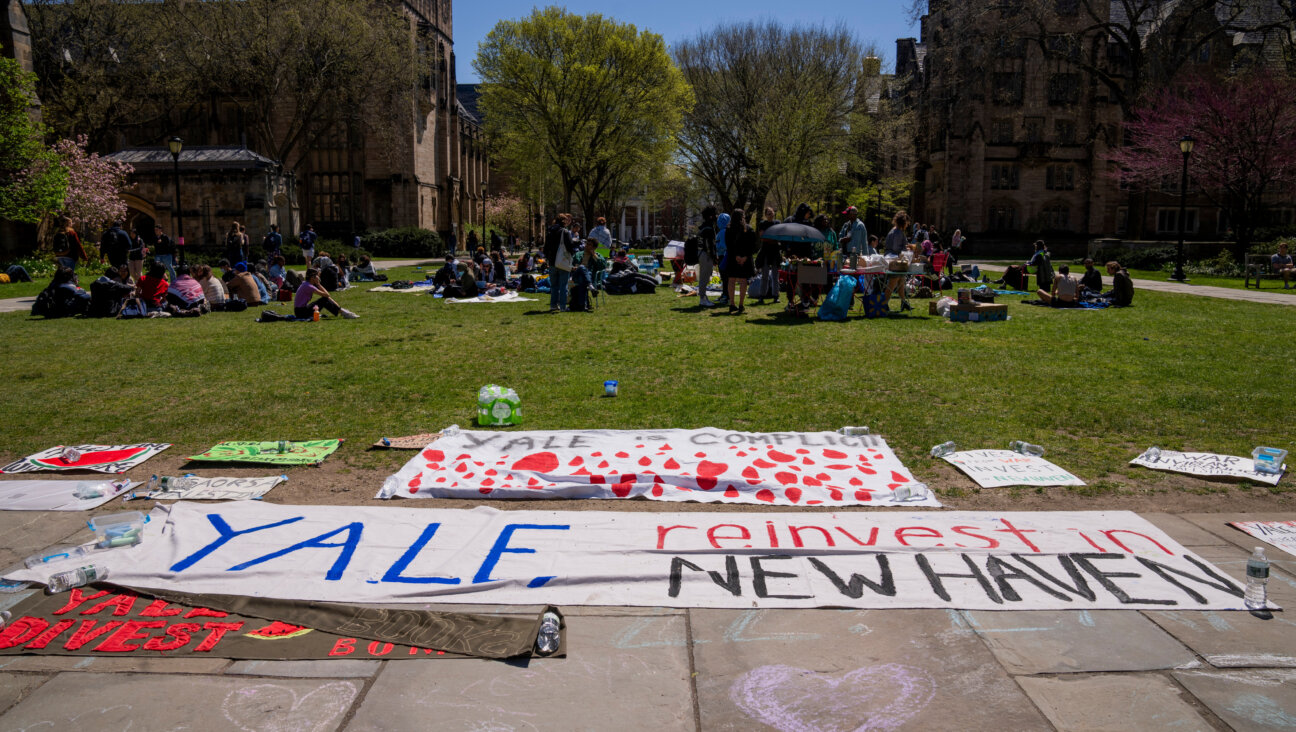Let’s Cancel Valentine’s Day!
It’s February, and I have a suggestion. Let’s eliminate Valentine’s Day and replace it with Tu B’Av.
Tu B’Av, for the curious, is a very minor Jewish holiday that takes place six days after the solemn fast of Tisha B’Av. Once upon a time on the 15th day of the month of Av, girls in white dresses would dance in vineyards under the full moon, saying, “Young man, consider who you would choose.” It was considered one of the happiest days of the Jewish year.
Why is an old matchmaking festival better than a modern-day holiday known for red cardboard heart boxes full of chocolates? Let me count the ways.
Valentine’s Day: about couples. If you’re not in a couple, you will never be so aware of that fact as on this day. If you are, you will suddenly feel pressured and extremely unoriginal.
Tu B’Av: about singles, which makes more sense. Couples can celebrate love whenever they want to. If you’re already with someone, you don’t need permission from society to give them flowers and candy, and you can send them love notes whenever you want to, even, say, in January or March.
Valentine’s Day: Christian. There were three Saint Valentines in early Christian history, all of whom were ultimately beheaded and one of whom was said to have secretly married couples in defiance of a Roman ban on the practice. He then may have been imprisoned, fallen in love with the daughter of the jailer, and sent her the first ever “valentine.”
Tu B’Av: Jewish, obviously. But pagan-ish, too. Though its roots are unknown, the connection between marriage, fertility and the full moon was prevalent in ancient cultures. And it’s possible that the day may have sanctioned mixing between different tribes that was not always allowed otherwise. Tu B’Av, more than some other obscure Jewish holidays (Shemini Atzeret, anyone?) is something many people could appreciate.
Valentine’s Day: new-fangled. Despite claims that the mid-February religious revels of ancient Greece and Rome were pre-cursors to our modern tinfoil-doily holiday, the verifiable link between Valentine’s Day and romance dates to the 14th century. It was then that Geoffrey Chaucer wrote of birds, “For this was Seynt Valentyne’s Day, when every foul cometh ther to choose his mate.”
Tu B’Av: ancient. No one knows how far back the holiday goes, but it was definitely around in the Second Temple period, i.e., before 70 C.E. Its observance seems to have faded around that date, after Jerusalem was destroyed.
Valentine’s Day: common and unavoidable. Even the scuzziest of drugstores will fill a whole aisle with red and pink and silver months in advance.
Tu B’Av: obscure. And not just because it’s not celebrated anymore. The history of Tu B’Av is vague even within Judaism. It’s not entirely clear why we decided this was a happy, romantic day in the first place. There are several theories, but basically it’s a puzzle.
Valentine’s Day: commercial. If you think the holiday as currently practiced is genuinely about love, you have never worked someplace that sells fruit-bouquets and little gifts. There are few sights as pathetic as the flocks of terrified men, driven by ad campaigns, who stream into such establishments every February. They don’t know what they’re doing there, exactly, but they have been told the women in their lives need chocolate-covered strawberries and teddy-bears.
Tu B’Av: not commercial. Today in Israel, Tu B’Av has become a sort of watered down Valentine’s Day, a popular date for romantic dinners and gifts and weddings. But the original Tu B’Av was not about money. In fact, it is specifically stated that the white garments worn by young women on that day were borrowed, in case a woman could not afford her own.
Valentine’s Day: happens in the dead of winter. And nothing says romance like shoveling snow and wearing a hat and gloves to bed, right?
Tu B’Av: occurs in summer, as Av usually coincides with August. Which is fortunate, because though vineyards can be lovely in winter, dancing about in them is not. I’m not particularly optimistic that Valentine’s Day will go away anytime soon. But I’d like to think there’s a reason that Tu B’Av never entirely disappeared. Instead it lay dormant, its existence remembered only by slight changes in the day’s morning prayer service, until the State of Israel was re-established. That’s almost 19 centuries. Any holiday that waited around that long might be worth rethinking. And stranger things have happened.

I hope you appreciated this article. Before you go, I’d like to ask you to please support the Forward’s award-winning journalism this Passover.
In this age of misinformation, our work is needed like never before. We report on the news that matters most to American Jews, driven by truth, not ideology.
At a time when newsrooms are closing or cutting back, the Forward has removed its paywall. That means for the first time in our 126-year history, Forward journalism is free to everyone, everywhere. With an ongoing war, rising antisemitism, and a flood of disinformation that may affect the upcoming election, we believe that free and open access to Jewish journalism is imperative.
Readers like you make it all possible. Right now, we’re in the middle of our Passover Pledge Drive and we still need 300 people to step up and make a gift to sustain our trustworthy, independent journalism.
Make a gift of any size and become a Forward member today. You’ll support our mission to tell the American Jewish story fully and fairly.
— Rachel Fishman Feddersen, Publisher and CEO
Join our mission to tell the Jewish story fully and fairly.
Only 300 more gifts needed by April 30
























